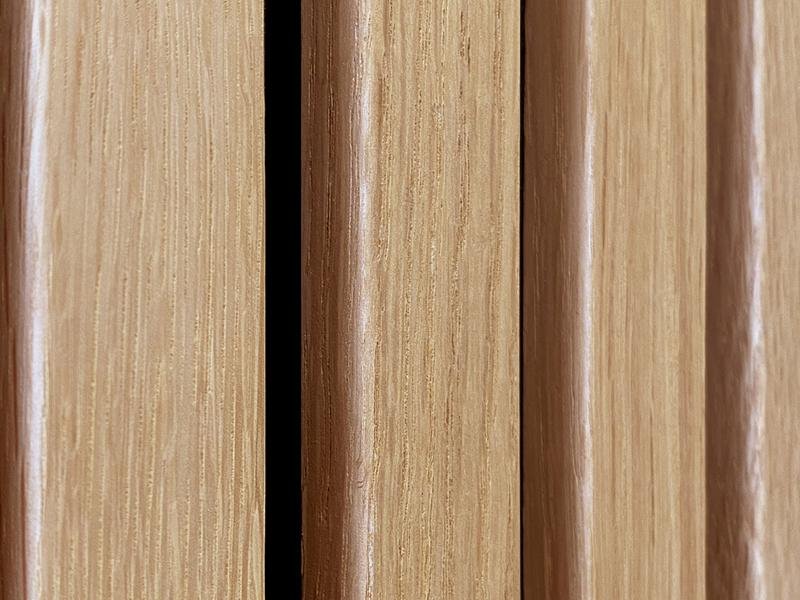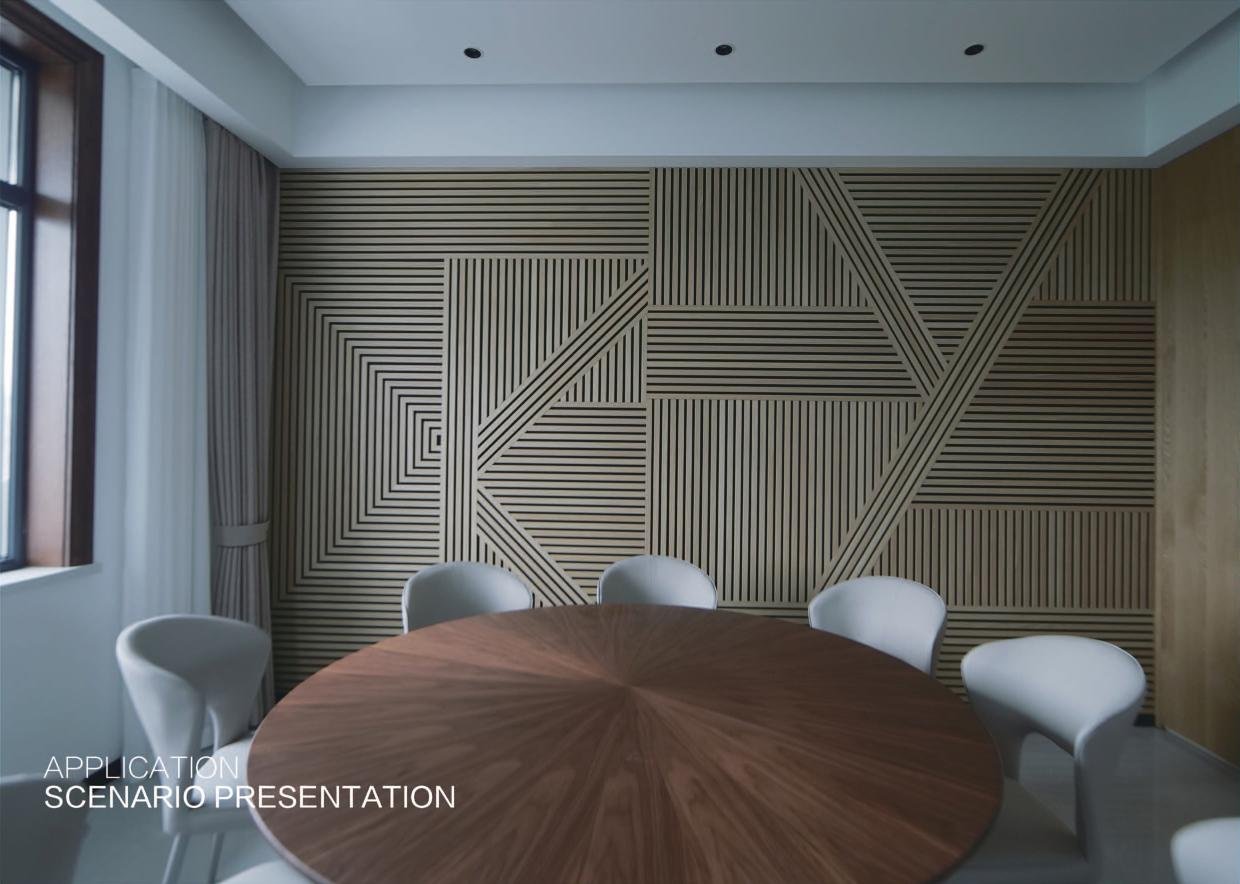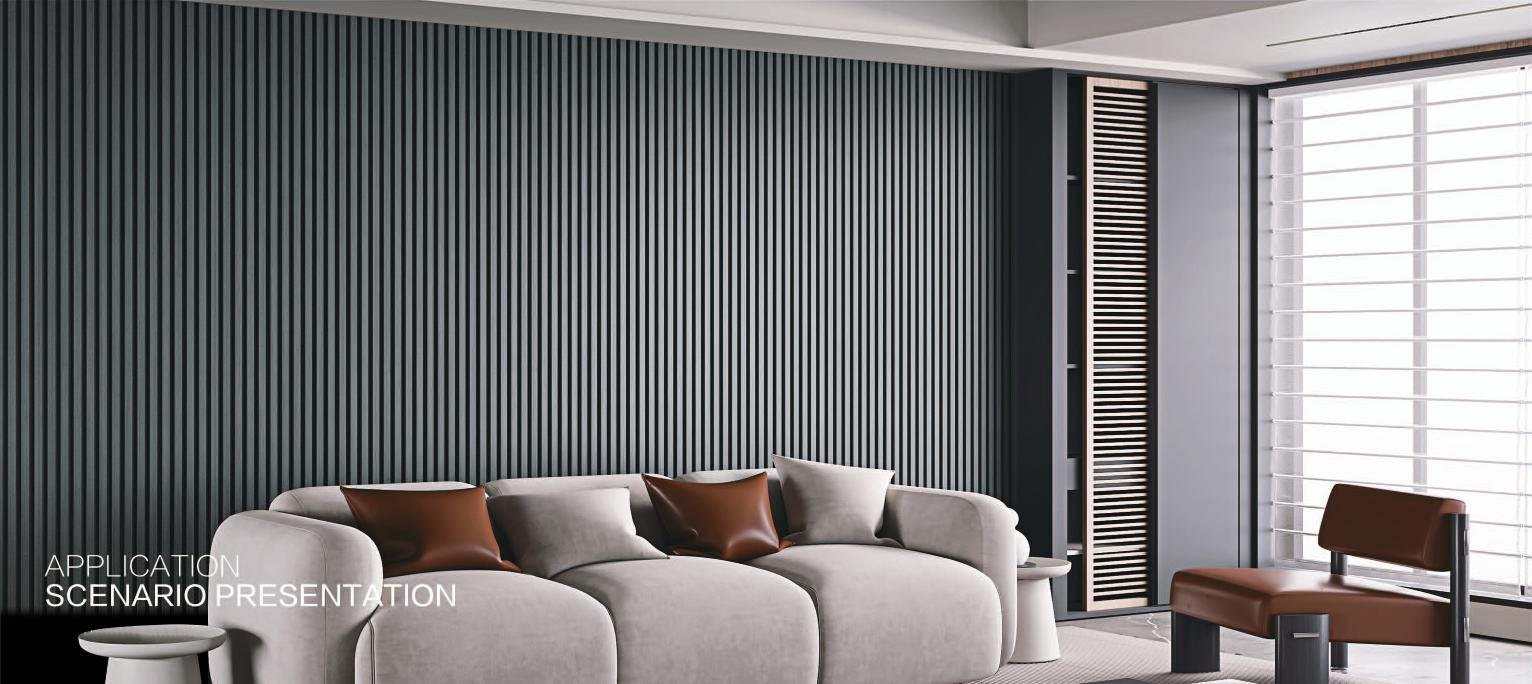Key Materials: PET +MDF
Two of the most popular core materials used for acoustic wall panels are PET (Polyethylene Terephthalate) and MDF (Medium Density Fiberboard).
- PET Acoustic Panels: Made from recycled plastic bottles, PET panels are eco-friendly, lightweight, and offer excellent sound absorption. They are also flexible, which makes them ideal for curved walls or creative design shapes.
- MDF Wall Panels: Known for their rigidity and durability, MDF panels can be finished with a wide variety of surface materials such as decorative paper, PVC, veneer, or solid wood slats. They provide a more structured look with additional options for fire resistance and water resistance.
Choosing between PET and MDF often depends on the specific needs of the project: flexibility and sustainability vs structure and durability.


Core Functions: Soundproofing, Fire Resistance, and Waterproofing
While acoustic performance is the primary function, modern acoustic wall panels can offer more:
- Soundproofing: Reduces noise transmission and echo in open spaces.
- Fire Resistance: Panels can be treated to meet international fire safety standards (e.g., B1 rating).
- Waterproofing: Ideal for areas with humidity or water exposure, like hotel lobbies or restrooms.
MasterWallPro offers multi-functional panels that combine these performance benefits with stylish design options.


Popular Applications in Residential and Commercial Spaces
Acoustic panels are used across many sectors. Here are some key applications:
- Residential: Living rooms, bedrooms, home theaters
- Commercial: Offices, meeting rooms, co-working spaces
- Hospitality: Hotel lobbies, guest rooms, conference halls
- Public Spaces: Museums, libraries, government buildings
These panels not only control noise but also contribute to the overall ambience and visual appeal of the space.


Buying Guide: What to Look for in 2025
When selecting acoustic wall panels in 2025, here are five factors to consider:
- Material Type – PET for sustainability and flexibility, MDF for structure and finish diversity.
- Acoustic Rating – Check NRC (Noise Reduction Coefficient) scores.
- Certification – Ensure compliance with standards like FSC, CARB, CE.
- Customization – Look for suppliers offering tailored colors, sizes, and finishes.
- Installation – Ask whether panels are ready-to-install and compatible with your space.
Working with a global supplier like MasterWallPro ensures access to high-quality materials, short lead times, and professional support.









